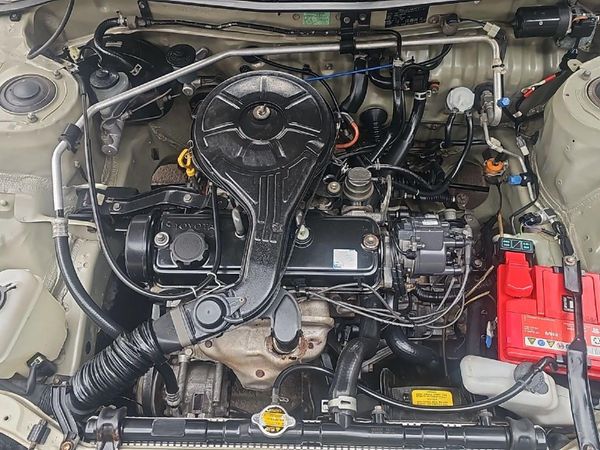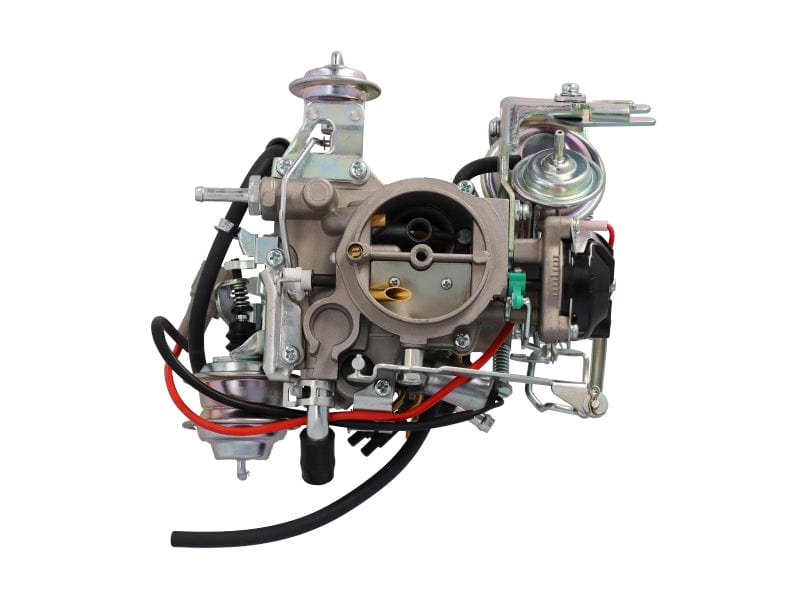How the Toyota Tazz Became a Staple in the Compact Car Market
How the Toyota Tazz Became a Staple in the Compact Car Market
Blog Article
Explore the Most Recent Trends in Engine Modern Technology With Tazz
In the swiftly developing landscape of automobile modern technology, Tazz stands at the center, highlighting substantial improvements in engine systems that focus on both innovation and sustainability. tazz. From hybrid engines that maximize gas effectiveness to the introduction of hydrogen gas cells, the patterns forming modern-day powertrains are not only enhancing performance however also attending to important environmental obstacles. As the market remains to push borders, it is crucial to think about just how these growths will influence future transport solutions and the more comprehensive ramifications for international power usage. What exists ahead in this crucial improvement?
Hybrid Engine Innovations
Crossbreed engine innovations stand for an essential change in automobile innovation, incorporating the benefits of internal burning engines with electrical propulsion systems. This integration not just improves gas effectiveness however likewise lowers exhausts, conference progressively strict ecological laws. By making use of both energy resources, hybrid engines can enhance efficiency, delivering power when required while saving fuel throughout much less demanding motoring problems.
Recent innovations in hybrid technology consist of renovations in battery performance and regenerative stopping systems. These innovations enable greater power recuperation during slowdown, which can be redirected to aid in acceleration or power accessory systems. Suppliers are focusing on light-weight materials and small layouts to optimize the performance of hybrid powertrains.
The growth of plug-in hybrids has additionally expanded the market, enabling motorists to charge their automobiles using typical electric outlets. This attribute frequently enables substantial all-electric range, more lowering reliance on standard fuels. tazz. As the automobile industry continues to evolve, hybrid engine technologies are anticipated to play an important duty in bridging the void between conventional automobiles and totally electric versions, giving a transitional remedy that deals with varied consumer needs and preferences
Developments in Electric Powertrains
The automotive landscape is swiftly developing, with electric powertrains becoming a leading pressure in sustainable transport. Advances in electrical automobile (EV) modern technology are dramatically improving effectiveness, user, and efficiency experience. Secret innovations include improvements in battery chemistry, which have raised energy thickness, lowered charging times, and prolonged total battery life.
Solid-state batteries, as an example, promise to reinvent the market by offering better safety and performance compared to typical lithium-ion cells. Moreover, improvements in regenerative stopping systems are allowing cars to recuperate power throughout slowdown, adding to total efficiency.
In enhancement to battery modern technology, electric motor layouts are coming to be a lot more innovative. Developments such as incorporated motors and progressed thermal administration systems are helping to optimize power distribution and minimize weight, inevitably improving car characteristics.

Jointly, these developments underscore the commitment to shift towards cleaner, much more reliable transportation options, placing electrical powertrains at the leading edge of vehicle advancement.
The Rise of Hydrogen Gas Cells
Progressively, hydrogen gas cells are obtaining traction as a practical choice to conventional inner burning engines and battery electric automobiles. This technology uses the chemical power saved in hydrogen, converting it into electricity with an electrochemical response with oxygen. The key byproduct of this procedure is water, making hydrogen gas cells an eco-friendly option with absolutely no emissions at the tailpipe.

Automakers are progressively buying hydrogen gas cell innovation, recognizing its capacity for long-range applications and rapid refueling abilities that measure up to traditional gas. Furthermore, industries such as heavy-duty transportation and public transportation are specifically well-suited for hydrogen fuel cells, where battery electric remedies may fall short as a result of weight and variety limitations.
As research study and investment remain to expand, hydrogen fuel cells are positioned to play a significant function in the future landscape of clean transportation and power remedies.
Enhancements in Internal Burning Engines
Innovations in interior burning engine (ICE) modern technology are transforming conventional automobiles to satisfy modern-day environmental standards and performance expectations. Direct fuel injection, for instance, enables for much better atomization of gas, leading to more full burning and enhanced power output.
In addition, turbocharging has actually gotten prominence, allowing smaller sized engines to provide greater performance without the weight of larger engines - tazz. This modern technology his explanation not just improves effectiveness however likewise adds to lower fuel usage. Variable shutoff timing systems are additionally being improved, making it possible for engines to adapt to numerous driving conditions for boosted torque and responsiveness
Furthermore, using lightweight products in engine building and construction is becoming common, further boosting gas performance by decreasing general automobile weight. Engine control devices (ECUs) are increasingly sophisticated, enabling real-time adjustments that optimize performance and exhausts.
These enhancements jointly symbolize a critical change in ICE innovation, lining up with global sustainability goals while still providing the performance motorists get out of their automobiles. As the market progresses, these improvements continue to shape the future of conventional auto engineering.
Future Trends in Engine Effectiveness
Substantial advancements in engine efficiency are prepared for as producers focus on integrating cutting-edge modern technologies to satisfy rigorous environmental policies and customer needs. The shift towards electrification, hybrid systems, and alternative gas is improving the vehicle landscape, driving advancements that enhance fuel economy and decrease emissions.
One of the crucial trends is the implementation of advanced products and manufacturing methods. Lightweight composites and high-strength alloys add to minimized automobile weight, thus enhancing overall efficiency. Furthermore, the fostering of turbocharging and variable shutoff timing modern technologies permits enhanced power outcome from smaller sized engines, even more boosting gas economic climate.

Verdict
To conclude, the expedition of engine innovation discloses substantial advancements that prioritize sustainability and performance. Developments in hybrid engine systems, electric powertrains, and hydrogen fuel cells demonstrate a dedication to decreasing exhausts while boosting performance. Additionally, improvements in inner combustion engines and a concentrate on light-weight materials add to general engine efficiency. As the automobile sector continues to develop, these patterns will certainly play a critical function in forming a cleaner and more sustainable future for transportation.
From hybrid engines that maximize gas efficiency to the emergence of hydrogen fuel cells, the fads forming contemporary powertrains are not only boosting performance yet additionally addressing important ecological difficulties.Hybrid engine advancements represent an essential change in automobile modern technology, incorporating the advantages of interior burning engines with electrical propulsion systems.In addition, turbocharging has actually obtained importance, permitting smaller sized engines to supply greater efficiency without the weight of bigger engines. Furthermore, the fostering of turbocharging and variable valve timing technologies enables for boosted power result from smaller sized engines, even more improving gas economic situation.
Improvements in interior burning engines and a focus on light-weight products contribute to general engine effectiveness.
Report this page